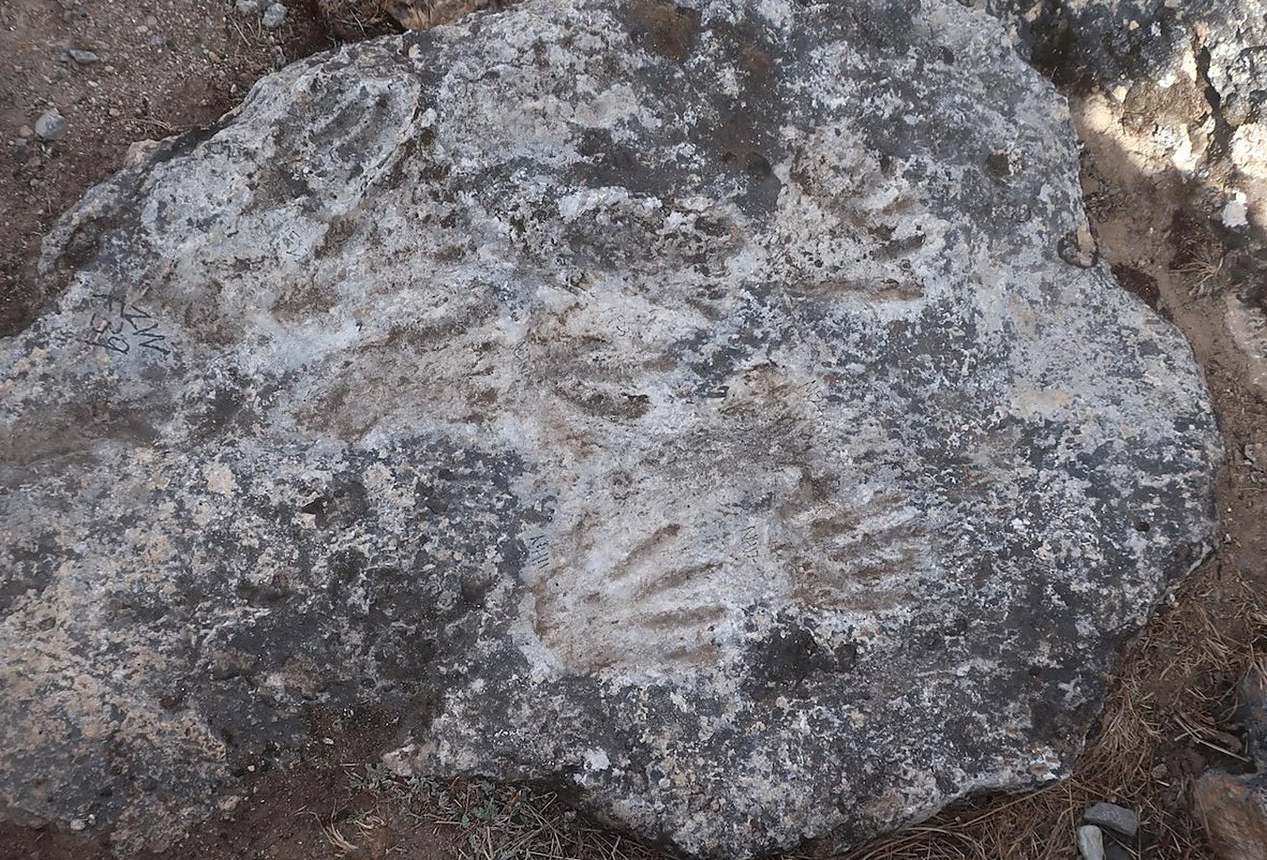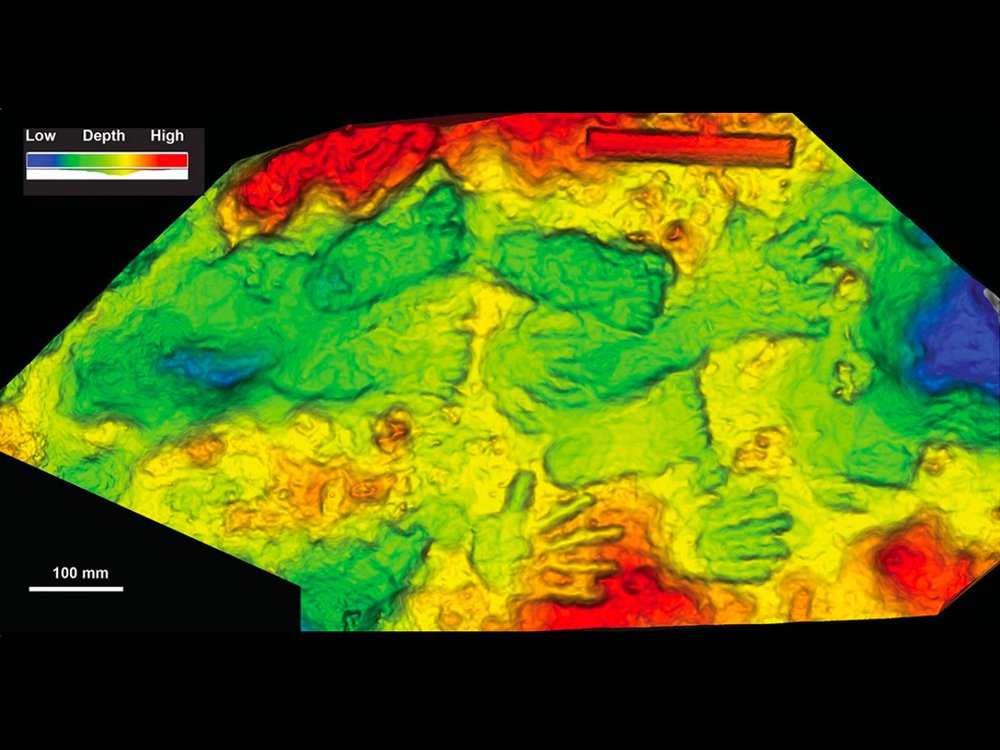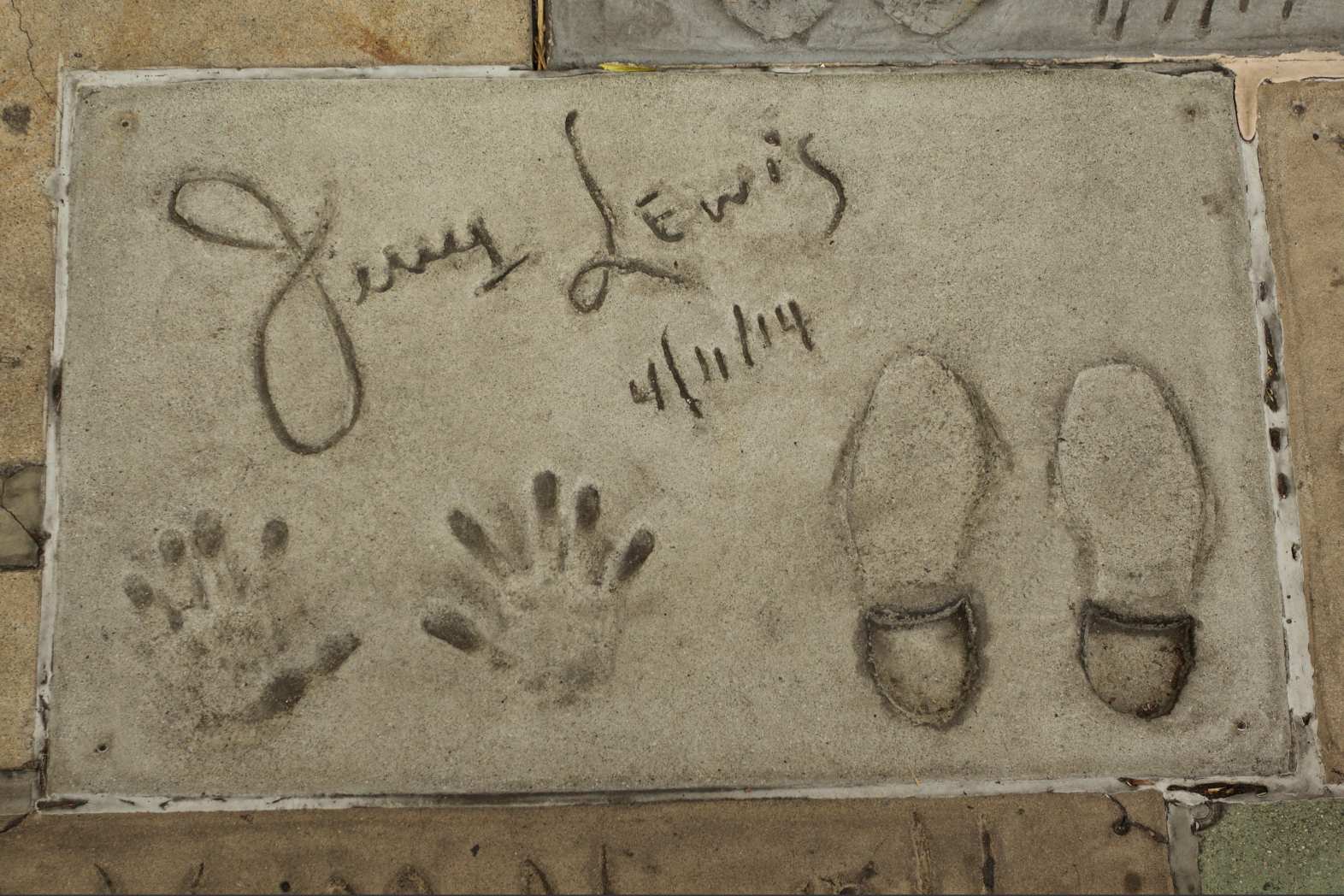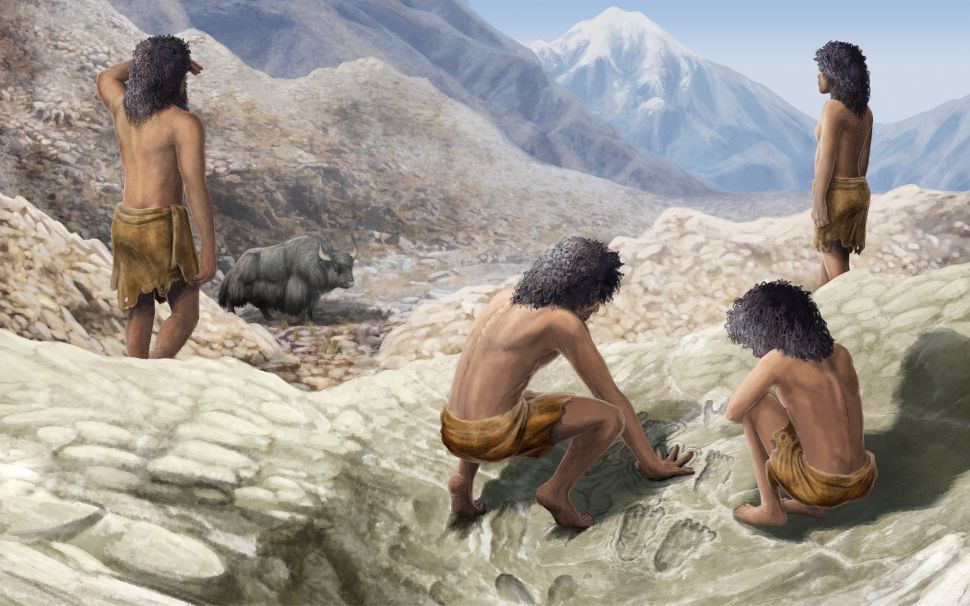A group of fossilized handprints and footprints found in Tibet, dating back roughly 200,000 years, could be the earliest examples of human art. And they were made by children.

Every parent knows that children love to get their hands and feet into mud. Such seems to be the case long ago at what used to be a hot spring at Quesang, high on the Tibetan Plateau at an altitude of 4,269 meters (14,000 feet) above sea level.
A report in the December 2021 journal Science Bulletin suggested these impressions were intentionally placed, not just the result of wandering in the area. The foot and hand prints fit exactly within a space, arranged close together like a mosaic. Their size indicates they were made by two children, one the size of a 7-year-old, and the other the size of a 12-year-old.

During that time, travertine, which is a type of limestone formed by hot mineral springs, formed a pasty mud which was perfect for making handprints. Later, when the hot spring dried up, the mud hardened into stone, preserving the prints over time.
The rocks have been dated to between 169,000 and 226,000 years ago. It is not known exactly who the people were that lived on the Tibetan Plateau at that time, but the individuals may have been Neanderthals or more possibly Denisovans rather than Homo sapiens. Denisovans are a branch of our early ancestors who lived in Asia and resembled modern humans. Tibetans living today still carry Denisovan genes.

Whether the imprints can be considered art or just kids playing in the mud is up for interpretation, although the authors of the paper stated that “it may be art in the same way that parents hang scribbles from children on their refrigerators and call it art.”
The authors described the medium the prints are in as intentionally altered, which they suggest could have been a kind of performance to show like, “Hey, look at me, I’ve made my handprints over these footprints.”
Or perhaps these impressions represent the human desire to leave marks behind on the landscape that say, “I was here.”
It’s a tradition that continues today with graffiti on walls in back alleys and famous actors and actresses who leave impressions of their hands and feet in cement along Hollywood Boulevard.

Little did these prehistoric kids know their handiwork would be preserved for hundreds of thousands of years.
If the carefully made prints are considered art, it pushes the history of rock art back more than 100,000 years. The oldest stencil-type handprints, where a hand is placed on a wall and coloured powder is blown around it to make an outline, have been found along with other cave paintings in Sulawesi, Indonesia and El Castillo, Spain dating back between 40,000 to 45,000 years ago.
This is known as parietal art because it is not meant to be moved, unlike paintings or statues that can be displayed anywhere and traded. And the oldest statues also only go back to about the same time period.
The children of ancient Tibet could be considered among the world’s first artists, or maybe they were just playing in the mud like all kids do. But the question of whether the impressions are art or not is almost moot because handprints and footprints from the deep past provide valuable scientific information.

Archeology usually deals with fragments from past cultures, such as pieces of pottery, building foundations, monuments and bones. It is up to the scientists to infer, to fill in the gaps and try to determine what the people were actually like. But handprints are the direct signature of a person.
Tourists on Hollywood Boulevard squat down to place their hands in the prints of their favourite actors to get a sense of what it might be like to shake their hand, sort of a virtual handshake. Now imagine a handshake that reaches across millennia into an actual moment in time, to a couple of kids who were just messing in the mud.



